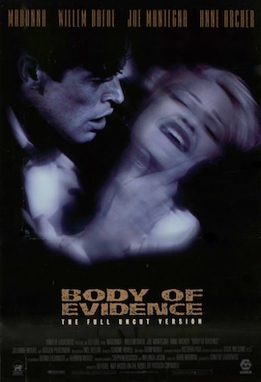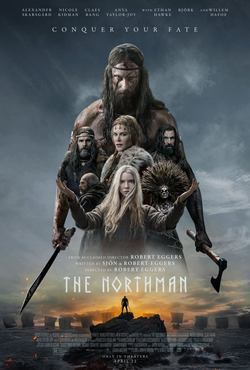After being delayed due to the COVID-19 pandemic/panic, Top Gun: Maverick has finally hit theaters. A film that deftly balances nods to the past while creating new stories, Top Gun: Maverick does just about everything right to become one of the best films of 2022.
Captain Pete "Maverick" Mitchell (Tom Cruise) is still a rebel, forever testing new airplanes as well as the Navy's patience. Only the personal intervention of his friend, now Admiral Tom "Iceman" Kazansky (Val Kilmer) keeps him from getting thrown out. Maverick, despite the major misgivings of Admiral Beau "Cyclone" Simpson (Jon Hamm), is given a new assignment.
He is to instruct the next generation of the Navy's elite Strike Fighter Tactics pilots on a strike into an unnamed enemy territory. They are to exterminate an illegal uranium enrichment facility before it becomes live. There is an issue for Maverick however apart from his lack of desire to teach. One of the potential fighters is Bradley "Rooster" Bradshaw (Miles Teller), who is the son of Maverick's old friend Goose, whose death still haunts both.
As the mission date comes closer, Maverick and Rooster must navigate their own pasts, while also dealing with their present. For Maverick, it is rekindling his romance with Penny (Jennifer Connelly), a bar owner. For Rooster, it is enduring the arrogance of his frenemy, Jake "Hangman" Seresin (Glen Powell). The mission, which does not go by without some hitches, brings satisfaction and resolution for Maverick and Rooster.
Sequels, especially those taking place decades after the events of the past film, can be tricky. You can drown the project in nostalgia, making callouts to various events and characters with little rhyme or reason. You can also try to expand on the story by ignoring what made the original so important to viewers. Independence Day: Resurgence is an example of doing just about everything wrong for that kind of sequel. Top Gun: Maverick, conversely, does not hit a wrong note in its story.
If you have never seen Top Gun or it has been so long that you don't remember everything, Top Gun: Maverick gives you enough information to fill in the blanks. We have little montages to give viewers information on the Maverick/Goose storyline. Bits of dialogue from Ehren Kruger, Eric Warren Singer and Christopher McQuarrie's screenplay fill in more information without hammering it in. Fans will enjoy starting out Maverick with a repeat of Kenny Loggins' Danger Zone.
We even have a bit of an homage to one of Top Gun's more memorable or infamous moments, depending on your point of view. There is a beach football scene where our shirtless hunks (and one appropriately dressed woman), play around, muscular bodies glistening in the setting sun. This appears to be an homage to Top Gun's beach volleyball scene, which some take as homoerotic, and some still go on about the players wearing jeans.
These moments that call back to Top Gun are subtle enough to catch fans attention without them being fan service. Moreover, they allow for character development. Seeing Maverick see Rooster and his fellow Naval fighters singing happily at Penny's bar allows viewers to remember a similar moment in Top Gun. It also allows for Maverick to reflect on his loss and guilt about Rooster's father.
Fans of Top Gun get their moments with these characters, but Top Gun: Maverick also allows for a new generation to have their moments too. Unsurprisingly, the actors who play the rookie pilots were not even born when Top Gun premiered save one: Jay Ellis as Reuben "Payback" Finch, and he was only four. Granted, none of them would be able to challenge Cruise as the star, and Top Gun: Maverick shows that despite being old enough to be their father, Maverick still can show these guys he was still far above them.
However, the younger cast gave strong performances, creating their own unique characters. Miles Teller is a tremendous talent, showcasing his skills in films like Whiplash. He's been a bit lost in his career of late, but Top Gun: Maverick brings him back. His Rooster is angry but determined, set on living up to the ghost of Goose and the shadow of Maverick. Teller does the most with the role, not making Rooster a blank action figure, but one filled with rage and regret, aware of his skills but unaware that those around him have tried to protect him even if he no longer needs protecting.
Top Gun: Maverick is also a calling card for Powell as the arrogant and cocky Hangman, his generation's Iceman. The character may be a bit one-note, all swagger and entitled, but Powell quietly shows that he too has his fears, especially when seeing how difficult and dangerous the mission is.
The other pilots, from Monica Barbaro as the efficient Natasha "Phoenix" Trace to Lewis Pullman as the naive Robert "Bob" Floyd, act their parts well. If there is a negative here, it is not in the performances but in that we did not go deep into these characters.
Perhaps that is more understandable in that Top Gun: Maverick was always going to be dominated by Tom Cruise. We see here what Cruise is capable of as an actor. Now more involved as an action star best known for his dangerous stunts in the Mission: Impossible franchise, Cruise here has moments of deeply moving acting. His scene with Kilmer, expressing his fears and regrets, is effective, and I can see how people would shed a few tears.
We also see how Cruise dominates the film through Maverick's love story with Penny. Connelly does not make her a vixen or a victim. Instead, she is a stable, mature woman, mature in every meaning of the word. Self-assured, loving, in love but not tied down waiting for her man, Penny is smart and romantic, a rare combination. I do not remember the younger kids having a romantic subplot.
Top Gun: Maverick also has thrilling action scenes before we get to the climatic raid. Some of the training sequences are intense and gripping, the danger elevated as to whether or not they will make it out alive. The film, again, was wise to not have the final mission go perfectly, giving us moments of action and character development.
If one can criticize certain elements, it is in perhaps some of the film's predictable moments (for example, who would come to the last-minute rescue). However, I think it is wrong to say that giving audiences what they want in something like Top Gun: Maverick lessens the film. Audiences who have long embraced Top Gun know what they will get with Top Gun: Maverick, and it does not cheat them.
That being said, Top Gun: Maverick also allows newbies to both explore this world and thrill to the action while letting these characters breathe and tell their stories away from the air. Top Gun: Maverick is a magnificent film, one that honors the past while living in the present, that balances action and heart. It might even be better than the original, a credit to its craftsmanship.
























_poster.jpg)



